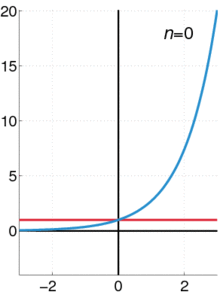Students:
This WebQuest was designed for an italian 3a Liceo Scientificodelle Scienze Applicate (approximatively 16-year old students)
Many phenomena can't be descripted or explained using algebraic models.
Exponential growth models are suitable to describe cases in which quantity increase dramatically, much more faster than in any other models.
Also exponential decay phenomena play an important role in real world: we bump into such examples in biology, chemistry, economics and so on.
We are going to explore the structure of exponential models and how exponential phenomena are relevat to our environment and to our lifes.

Working in groups of three, you must collect, analyze and discuss information about exponential growth:
1. Analyze the main features of exponential functions and how they can be used to model growth phenomena
2. Browse the Internet and find examples of growth phenomena which can be modeled using exponential functions
3. Discuss whether found materials are relevant and publish your conclusion

First step - Get acquainted with exponential functions
Answer thefollowing answers:
why do exponential functions grow faster than any polynomial function?
- can you formalize this statement for an n-degree polynomial?

Second step - examine exponential growth in depth
Third step - discussion
Answer the following questions:
Then publish your observations on our Padlet notice board and discuss them with other groups

Fourth step - work out an exponential problem

Fifth step - summarize outcomes
You are requested to write a concise HTML page summarizing what we have discovered:
A Symbaloo webMix might help to expand your perspective and to examine the issue in depth.
Then attach the presentation file to a post in the Exponential Models WebQuest Forum on our Moodle platform
Evaluation
Completeness is the the main requirement. All the questions must be properly answered.
Moreover answers must be clear and comprehensible. An adequate mathematical formalization of the problems will be appreciated.
Also original details will be taken into consideration.
The grade will be the same for each member of the group.
Two final products will be evaluated:
1 to 30 points
1 to 70 points
Each product will be graded 0 to 100 points, according to the following grid:
| Content - Accuracy | All content throughout the presentation is accurate. There are no factual errors. | Most of the content is accurate but there is one piece of information that might be inaccurate. | The content is generally accurate, but one piece of information is clearly flawed or inaccurate. | Content is typically confusing or contains more than one factual error. |
| 60 | 40 | 20 | 0 | |
| Sequencing of Information | Information is organized in a clear, logical way. It is easy to anticipate the type of material that might be on the next card. | Most information is organized in a clear, logical way. One card or item of information seems out of place. | Some information is logically sequenced. An occasional card or item of information seems out of place. | There is no clear plan for the organization of information. |
| 25 | 12 | 7 | 0 | |
| Originality | Presentation shows considerable originality and inventiveness. The content and ideas are presented in a unique and interesting way. | Presentation shows some originality and inventiveness. The content and ideas are presented in an interesting way. | Presentation shows an attempt at originality and inventiveness | Presentation is a rehash of other people's ideas and/or graphics and shows very little attempt at original thought. |
| 25 | 12 | 7 | 0 |

Thanks for having participated to the Exponential Models WebQuest!
Modeling real-life phenomena are not a no-sweat work. Many components are to taken into account, in order to preserve information.
On the other hand, smplification is necessary since complexity might be overwhelming and preventing comprehension.
If we want to get reality phenomena, we need to model facts and data.
All your presentations will be shown and discussed in the classroom.
Students:
This WebQuest was designed for an italian 3a Liceo Scientificodelle Scienze Applicate (approximatively 16-year old students)